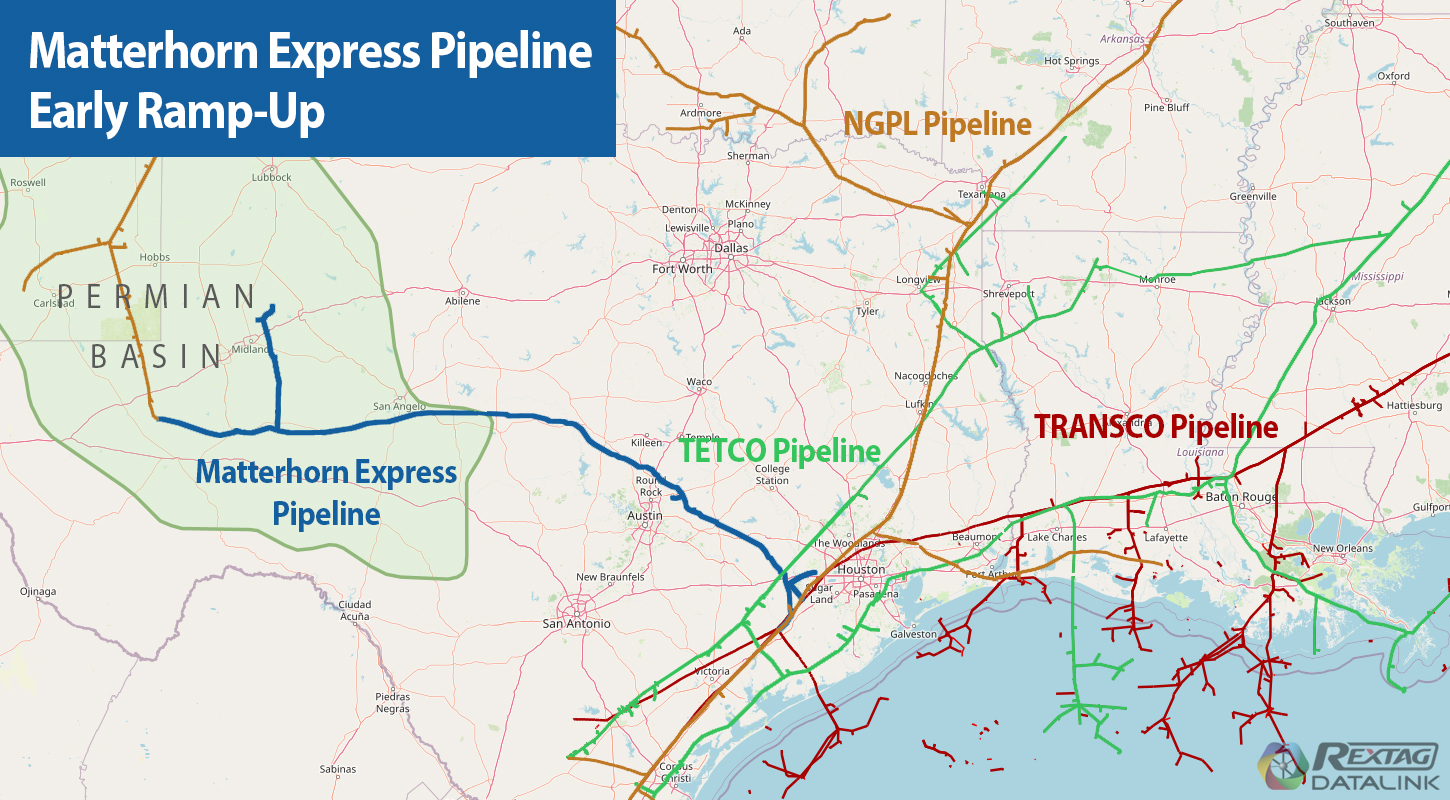
A natural gas pipeline. (Source: Shutterstock)
The Matterhorn Express Pipeline, which ramped up transmission of Permian Basin natural gas on Oct. 1, eclipsed 1.2 Bcf on Oct. 18, surpassing expectations of analysts at East Daley Analytics.
Matterhorn, a joint venture (JV) of Whitewater Midstream, EnLink Midstream (recently acquired by ONEOK), Devon Energy and MPLX, began deliveries to its third interstate pipeline on Oct. 15, East Daley said. Kinder Morgan’s NGPL joined Williams Cos.’ Transco and Enbridge’s Texas Eastern (TETCO) pipelines in receiving gas.

“The ramp on Matterhorn is happening at a faster clip than [East Daley] modeled in the ‘Permian Supply & Demand Forecast,’” research analyst Ian Heming wrote in a research note. “Notably, northbound flows from the Permian have only decreased 200 MMcf/d since Matterhorn began delivering gas on Oct. 1, based on pipeline electronic bulletin boards we monitor.
NGPL posted initial flows of 165 MMcf/d, Heming wrote. The three interconnecting pipelines have a total capacity of more than 1.4 Bcf/d, or about 57% of 42-inch Matterhorn’s nameplate capacity of 2.5 Bcf/d, he said.
However, Heming raised the possibility that Matterhorn may be ramping even faster. He noted that the Gulf South pipeline’s Coastal Bend interconnect saw its flows jump 70% to average 462 MMcf/d through mid-October, compared to its September average of 271 MMcf/d. The interconnect set its own record of 567 MMcf/d on Oct. 18.
While the quick ramp is welcome news for owners of the three interstate systems, “it’s also good for the Permian industry at large, lending confidence in our forecast for oil and gas growth,” Heming wrote.
East Daley expects Matterhorn’s presence in the Permian to boost fourth-quarter crude production by 150,000 bbl/d to 200,000 bbl/d. Its 2025 growth forecast is 350,000 bbl/d.
Recommended Reading
Oil Industry ‘Bracing for a Crisis’ as Tariffs Roil Market—WoodMac
2025-04-23 - Oilfield services companies say they’re navigating short-term uncertainty and maintaining long-term confidence while tariffs and increased OPEC production could increase costs up to 4% onshore and 14% offshore.
Tankers Chartered by Chevron to Move Venezuelan Crude Seek Other Business
2025-04-23 - Some tankers Chevron had chartered to move crude from Venezuela to the U.S. this month are now being marketed for spot contracts elsewhere.
Sabey Data Centers to Add Capacity in Washington State
2025-04-23 - The service provider Sabey Data Centers is expanding its operations in Seattle and East Wenatchee.
Stonepeak Launches Data Center Company Montera Infrastructure
2025-04-23 - Stonepeak has committed $1.5 billion to Montera Infrastructure to develop and operate data centers in metro areas.
Lightshift, Danville Partner for Second Battery Project in Virginia
2025-04-23 - Lightshift Energy and Danville Utilities are partnering on the Danville II battery energy storage project, which is expected to come online in second-quarter 2026.
Comments
Add new comment
This conversation is moderated according to Hart Energy community rules. Please read the rules before joining the discussion. If you’re experiencing any technical problems, please contact our customer care team.




